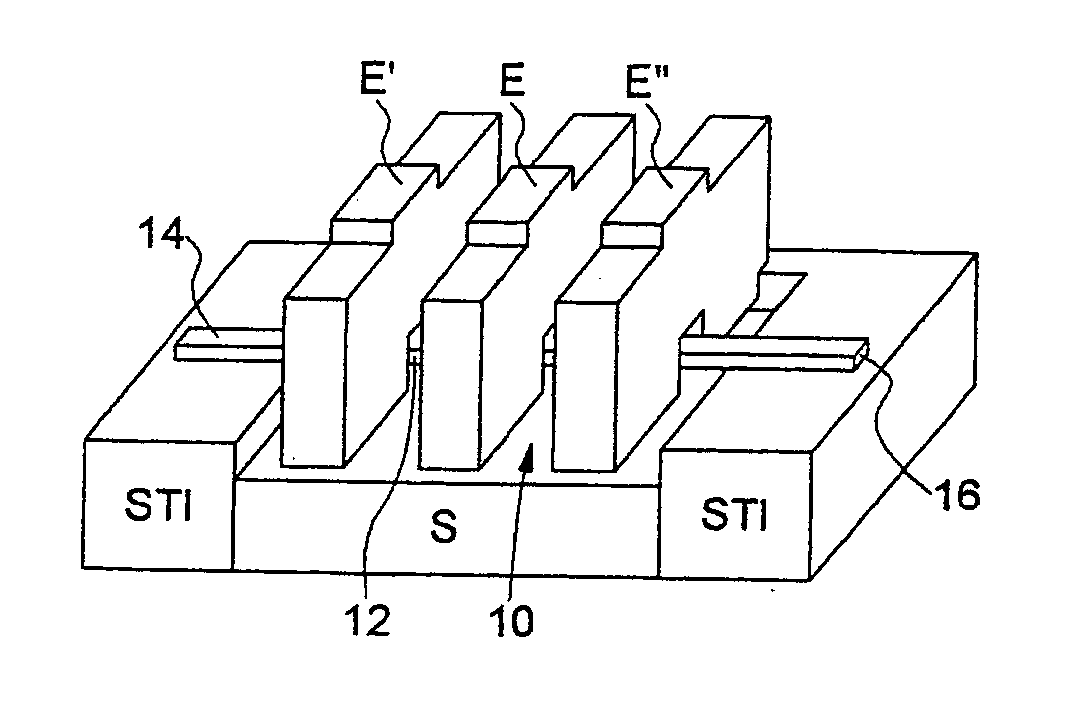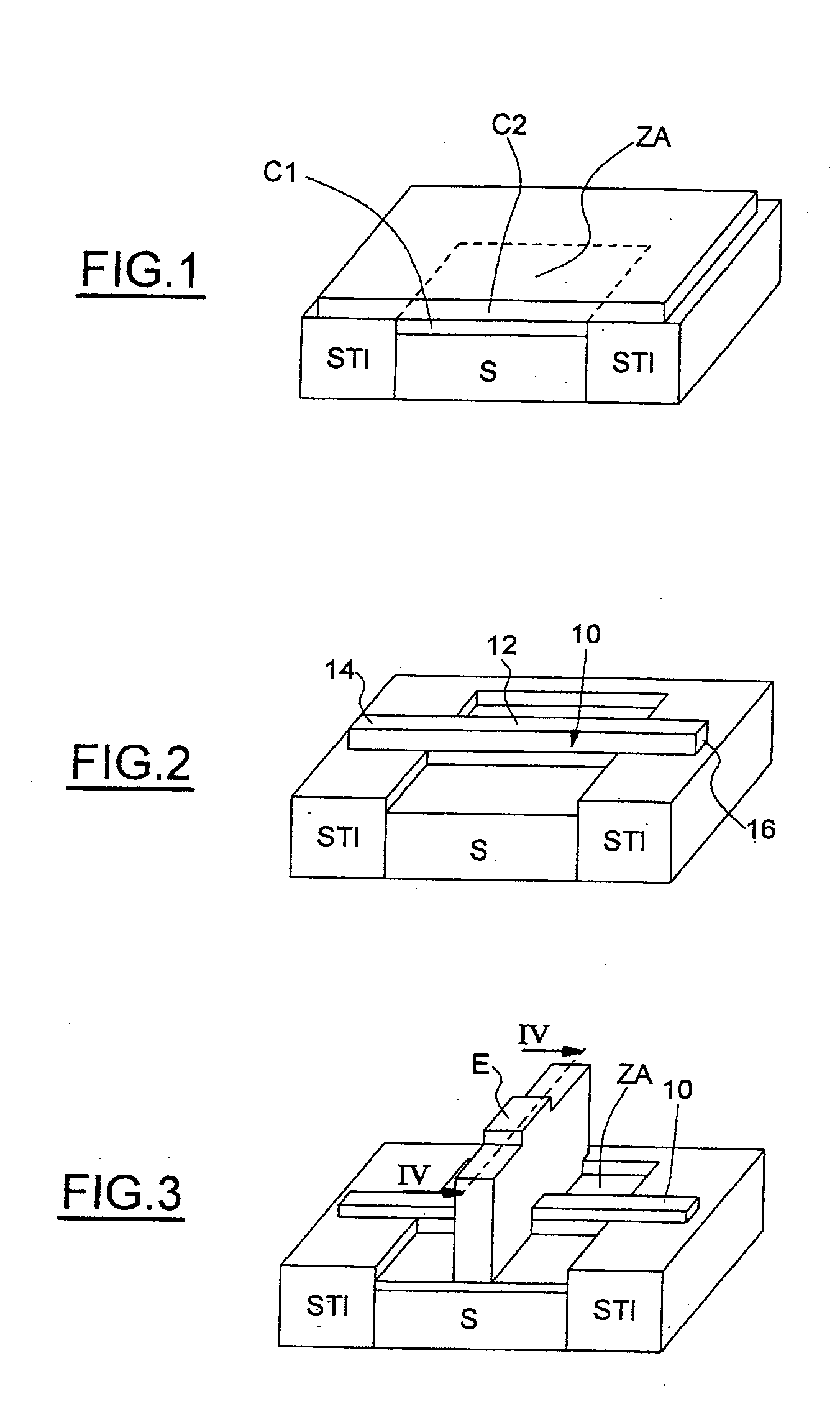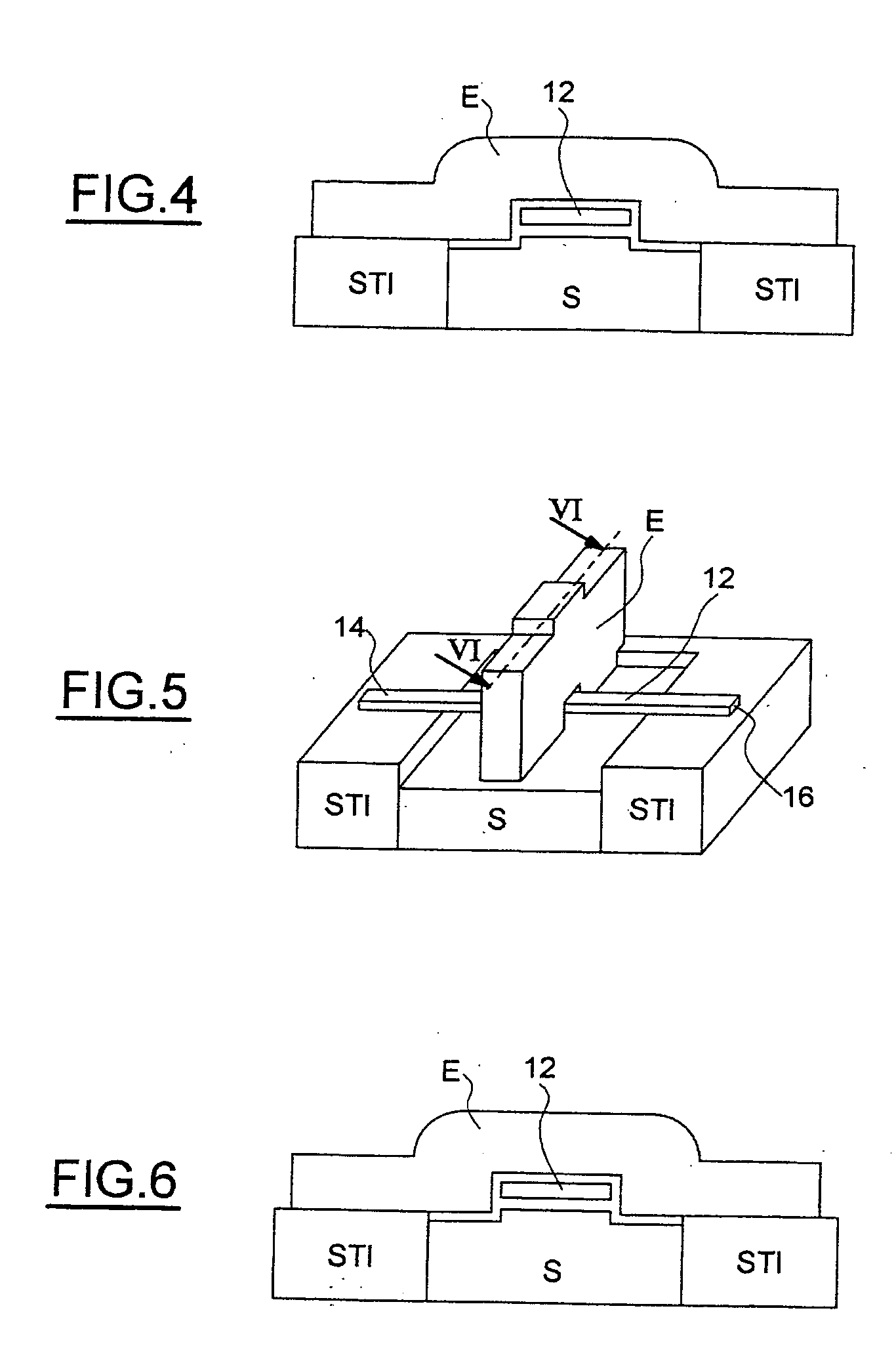Electromechanical resonator and method for fabricating such a resonator
a technology of electromechanical resonators and resonators, which is applied in the direction of piezoelectric/electrostrictive devices, microstructured devices, electrostatic generators/motors, etc., can solve the problem of relatively limited performance of resonators, and achieve high integration and enhanced performance
- Summary
- Abstract
- Description
- Claims
- Application Information
AI Technical Summary
Benefits of technology
Problems solved by technology
Method used
Image
Examples
Embodiment Construction
[0037] Referring firstly to FIGS. 1 to 6, the principal phases of an embodiment of a method for fabricating an electromechanical resonator according to the invention will be described.
[0038] As represented in FIG. 1, the starting structure for the production of the resonator consists of a silicon substrate S, in which is formed an active zone ZA surrounded by an insulating region STI (Shallow Trench Isolation).
[0039] On the basis of this structure, a sacrificial-material layer C1, preferably consisting of silicon-germanium (SiGe), is formed by selective epitaxy above the active zone ZA. A silicon layer C2 is then grown by nonselective epitaxy.
[0040] The techniques of growth by selective and nonselective epitaxy are conventional techniques within the scope of a person skilled in the art. They will not therefore be described in detail below. It will, however, be pointed out that these steps make it possible to obtain a localized SiGe layer on the active zone ZA, a monocrystalline-s...
PUM
 Login to View More
Login to View More Abstract
Description
Claims
Application Information
 Login to View More
Login to View More - R&D
- Intellectual Property
- Life Sciences
- Materials
- Tech Scout
- Unparalleled Data Quality
- Higher Quality Content
- 60% Fewer Hallucinations
Browse by: Latest US Patents, China's latest patents, Technical Efficacy Thesaurus, Application Domain, Technology Topic, Popular Technical Reports.
© 2025 PatSnap. All rights reserved.Legal|Privacy policy|Modern Slavery Act Transparency Statement|Sitemap|About US| Contact US: help@patsnap.com



